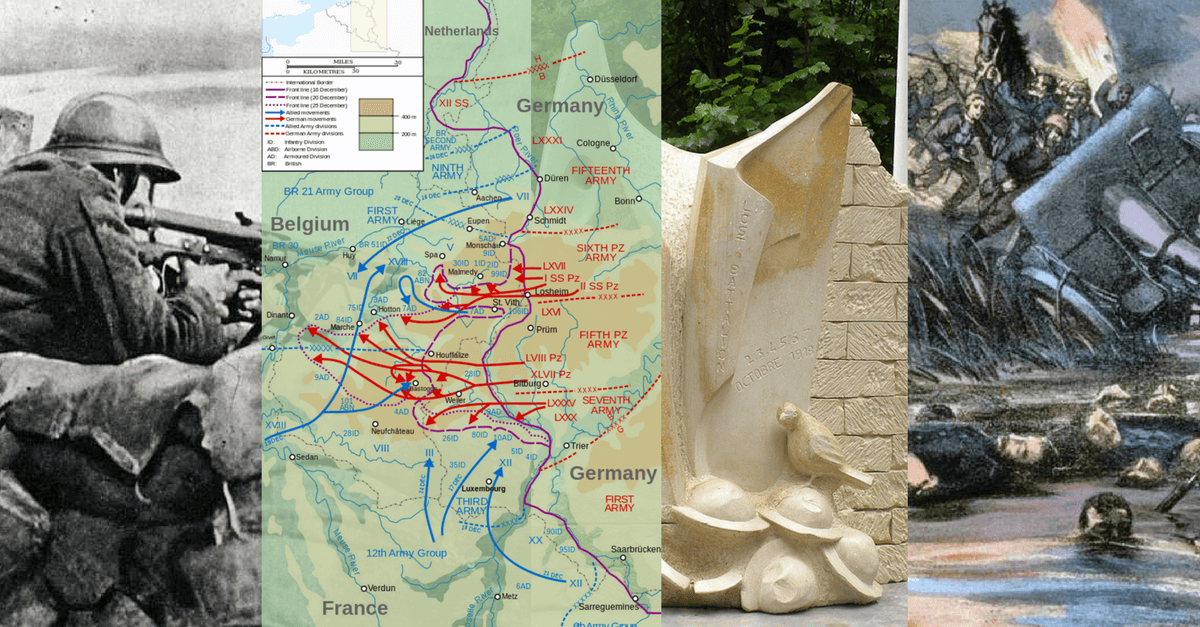The Lost Battalion of WWI
The Americans were eager to make their mark when their boys finally entered the Great War. The Americans had no idea what to expect as even firsthand accounts of trench warfare could not reflect what it was like to be in the thick of the fighting.
The American 306th-308th Regiments spearheaded an attack into the well-defended Argonne Forest. The Germans had held this position for years and continually added new defenses and planned artillery strike zones.
The American 307th pushed through to their objective; Hill 198. Their neighboring American and French regiments attacked on either side but were forced back by strong German counterattacks.
Less than 600 Americans held their objective but the Germans completely encircled them, though the occupied Hill provided decent protection, especially from artillery. Commander Whittlesey sent runners to locate his allies, but none of the men returned.
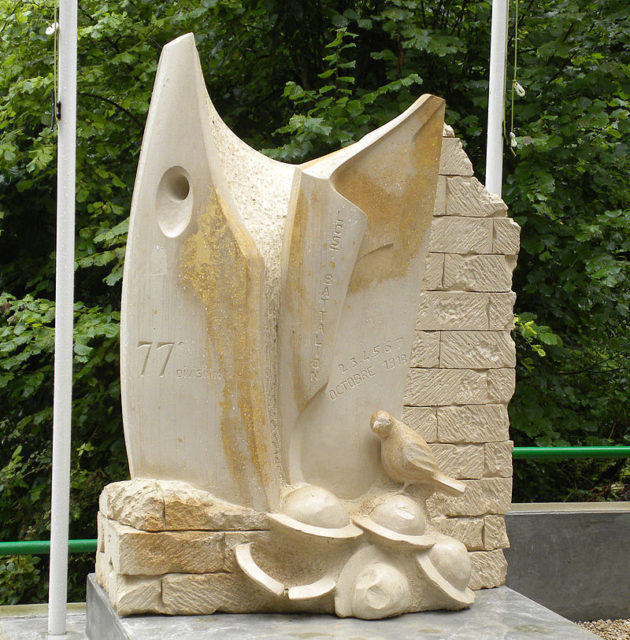
The Americans had little food and a lot of wounded. Their access to water was only available by running through German fire to get to a creek. Dressings were salvaged from the dead to be used on the wounded. A fierce German attack from all sides was desperately defended, escalating to hand to hand combat before the Germans were repulsed.
The Germans sent a messenger imploring the Americans to surrender saying it would be the humane thing to do. They could hear the suffering of the American wounded from their positions. Whittlesey ignored the request. Even after an airdrop of supplies accidently fell to the Germans instead, the Americans held firm.
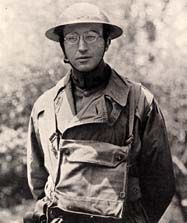
The Americans were encircled for six days, distracting the Germans. An allied offensive was overwhelmingly successful thanks to the diverted German units on the “Lost Battalion.”
The attack freed the 307th (who had some companies from the 306th and 308th), and the men were immediately removed from combat roles, already having served enough. The Lost Battalion were celebrated in the States at the time. Whittlesey and others were among the first Americans awarded the Medal of Honor for WWI.
The Great War was overshadowed by WWII so, unfortunately, this recklessly heroic stand is often forgotten.
Belgian Line (The Yser Front) of WWI
The Belgians had a rough time during the World Wars. They were one of the first nations invaded each time and were too small a country to repel the incursion. The Belgians, at least during WWI, were fierce fighters led by a courageous and admired royal family.
As Germany plowed through Belgium the unprepared Belgians knew they had to concede territory and led a stout fighting retreat to the Yser River. The retreat dragged on, bogging down the Germans and gave France vital time to prepare for an offensive.
Reaching the Yser, the Belgians had only a small fraction of their land left, so they responded by holding their ground, fighting the massive Battle of Yser.
The outnumbered Belgians had very little help from the French and British but were still able to force the Germans back with enormous casualties on both sides. The Belgians, in particular, took a huge hit, but knowing that the Yser was all they had left, they continuously rallied to the fight, beating the Germans in a battle of sheer willpower.
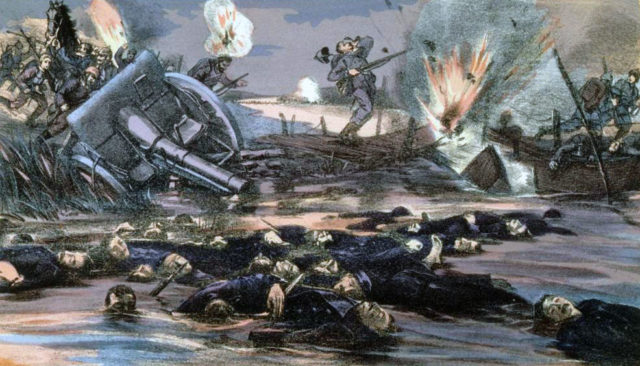
With a victory here the Belgians established the Yser front. The strong resistance at Yser led to the front being relatively peaceful, although there were still plenty of small battles and sniping.
Throughout the battles and the remainder of the war, Belgian King Albert commanded his troops from the front lines. His wife acted as a nurse and his son enlisted as a member of the infantry. Belgian pride never faded, and Belgium was never fully conquered during WWI thanks to the bold stand at the Yser River.
Battle of Wizna
Moving forward to WWII, and one of several instances of a courageous Polish stand. Not all valiant stands resulted in a victory. 500-800 Poles stood up against more than 40,000 Germans. It was an uneven battle and not one they could win.
In a fight that is known by some as the Polish Thermopylae, masses of German troops, complete with tank battalions, attacked the Polish town of Wizna. The Poles had a series of fortified bunkers but lacked tanks. They had only a few heavy weapons to deal with enemy tanks, six artillery pieces, and two anti-tank rifles.
Luckily for the Polish, their bunkers around Wizna were brand new and quite robust. The tanks could not crack them. Polish machine gun fire rattled through the German infantry. Each bunker fought furiously as they were individually surrounded and slowly destroyed by tank and artillery fire.
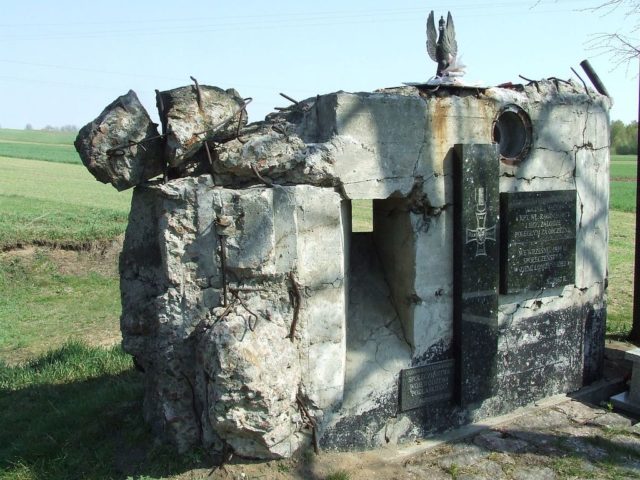
What little anti-tank weapons the Poles had were used to great effect as the Germans lost at least ten tanks in their assault. Three days of fighting and several attacks at each location finally wore the positions down. Most of the bunkers were destroyed.
Polish Commander Raginis was terribly wounded in the command bunker and knew their position was now hopeless. The Germans were threatening to execute the few POWs they had if resistance continued. Raginis gave his men orders to surrender before falling on a live grenade.
Some of the Polish fighters seem to have escaped, but over 90% of their force was killed or captured. There is no reliable estimate of German losses, but they were likely in the thousands.
If each bunker repelled several attacks, and over ten tanks were destroyed, it is safe to assume that total casualties, wounded and dead, ranged 2,000 or more. German reports at the time, though, claimed only a few dozen dead.
The Siege of Bastogne
The very well done HBO mini-series Band of Brothers has done an excellent job in bringing the Siege of Bastogne to mainstream attention. Those who have not seen the series might be unfamiliar with the cold winter stand of the American 101st and other divisions.
The outcome of WWII was essentially decided when the allies seized Normandy, but the war raged on. The allies surged forward, retaking Belgium. From Antwerp in the North to Bastogne in the Southeast all the way to Switzerland. The Germans were devising a massive offensive, hoping to surprise and trap portions of the rapidly advancing allies.
They were successful, at first, in the North launching a surprise assault from the Ardennes Forest.
Bastogne was supposedly a quiet region. Located at the crossroads of several important roads, it was thought the Germans lacked the strength and ability to attack through difficult terrain. Troops in Bastogne were stationed there if they already had heavy combat experience.
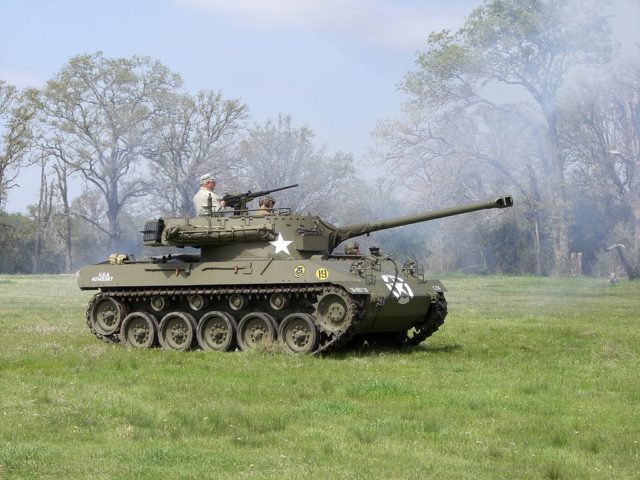
The Germans, however, did attack, cutting off three sides of Bastogne. To prevent a German tank attack on Bastogne itself, a handful of M18 Hellcat tank destroyers were put in position to counter German armor. The Hellcats performed admirably, cementing their place as one of the most effective tank-destroyers of the war. This fierce defense led the Germans to forego a direct assault on the town, leading to it becoming encircled instead.
The American force was surrounded at the start of one of the coldest winters in living memory. They had little in the way of winter clothing and other supplies. The had limited ammo and even lacked a lot of senior officers who happened to be in other locations.
German attacks were sporadic for a few days, but each stab towards Bastogne was repulsed, with American infantry, tank destroyers and artillery working effectively together. The Americans managed to capture several dozen Germans during the attacks, although the men were still surrounded and freezing.
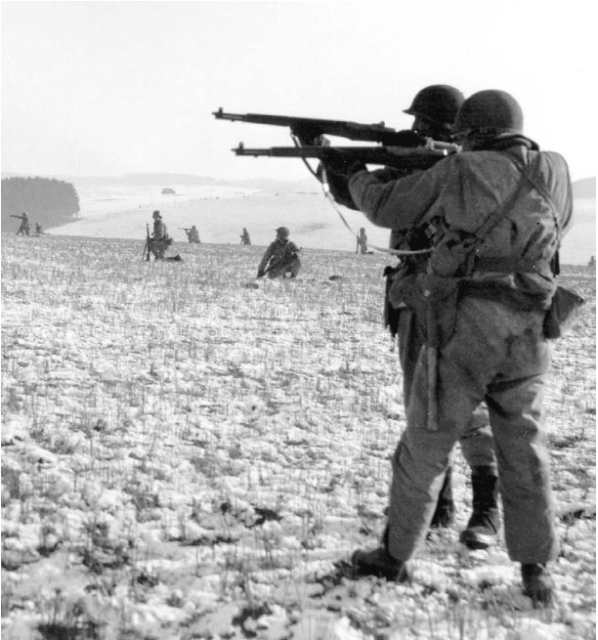
The Germans sent a message urging the Americans to surrender. It was similar to the one given to the Lost Battalion of WWI.
It said the American position was hopeless and they would shell the town soon, resulting in civilian casualties. It would be a humane decision to surrender. In response, the Brigadier General Anthony McAuliffe replied with one word: NUTS!
The German offensive was severely bogged down by the Americans in Bastogne who would not yield the important crossroads town.
The men spent Christmas 1944 trying to stay warm and survive. When an allied push finally broke the encirclement, the exhausted fighters at Bastogne got a well-deserved rest. (Some did, others kept on the attack!) They knew they had put a hitch in the German offensive.
